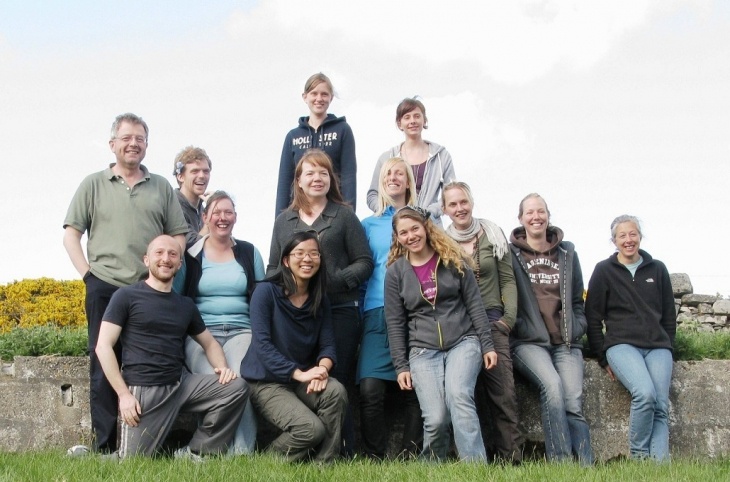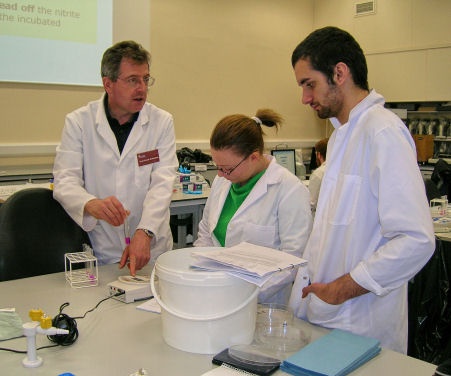
BSc PhD
Emeritus Professor
- About
-
- Email Address
- david.robinson@abdn.ac.uk
- Office Address
School of Biological Sciences.
I retired in 2015 and am no longer supervising research students.
- School/Department
- School of Biological Sciences
Biography
Education
1983 PhD Plant Ecology, University of Sheffield (supervisor Ian Rorison)1979 BSc (Hons) Biology, University of Manchester.
CareerCurrently (since 2015) Emeritus Professor, University of Aberdeen
2010-2015 Keeper, Cruickshank Botanic Garden
2000-2015 Professor in Plant and Soil Science, School of Biological Sciences, University of Aberdeen (Deputy Head of School 2002-2011).
1987-2000 Senior research scientist, the Scottish Crop Research Institute, Dundee.
1984-1987 Research scientist, the Macaulay Institute, Aberdeen.
1983-1984 Research associate, NERC Unit of Comparative Plant Ecology, University of Sheffield.
External Memberships
Editor
2013 Mechanisms of Plant Competition, Functional Ecology Special Feature (with Clare Trinder and Rob Brooker).
1999-2005 Senior Editor, Functional Ecology.
1995-2005 Editorial advisory board member, New Phytologist.
1995-2005 Editorial board member, Plant and Soil.Other positions of responsibility
2015-2022 Trustee, Macaulay Development Trust
2010-2022 Elected member, Kirriemuir Landward West Community Council.2016-2019 Lay assistant, Judicial Appointments Board for Scotland
2015 External reviewer, MSci Ecology degree, University of Manchester
2014 External review group member, BA Science degree programme, Trinity College Dublin
2013 Symposium organiser, INTECOL Congress of Ecology, London
2010-2015 Trustee, the Cruickshank Trust.
2009-2012 External examiner, BSc Biology, University of Manchester.
2009 Science review panel member, Centre of Excellence for Invasion Biology, University of Stellenbosch, South Africa. L-R Steven Chown, DR, Richard Cowling, Dan Simberloff:
Latest Publications
OPT-ing out: Root−shoot dynamics are caused by local resource capture and biomass allocation, not optimal partitioning
Plant, Cell Environment, vol. 46, no. 10, pp. 3023-3039Contributions to Journals: ArticlesDirectly quantifying multiple interacting influences on plant competition
Plant, Cell & Environment, vol. 44, no. 4, pp. 1268-1277Contributions to Journals: Articles- [ONLINE] DOI: https://doi.org/10.1111/pce.13944
- [ONLINE] View publication in Scopus
Clothing the Emperor: Dynamic Root–Shoot Allocation Trajectories in Relation to Whole-Plant Growth Rate and in Response to Temperature
Plants, vol. 8, no. 7, 212Contributions to Journals: ArticlesDemographic quantification of carbon and nitrogen dynamics associated with root turnover in white clover
Plant, Cell & Environment, vol. 41, no. 9, pp. 2045-2056Contributions to Journals: ArticlesPriming of soil organic matter mineralisation is intrinsically insensitive to temperature
Soil Biology and Biochemistry, vol. 66, pp. 20-28Contributions to Journals: Articles- [ONLINE] DOI: https://doi.org/10.1016/j.soilbio.2013.06.020
- [ONLINE] View publication in Scopus
- Research
-
Research Overview
- Plant-soil interactions and their importance to ecology and agriculture
- Quantitative biology
- Biogeochemistry
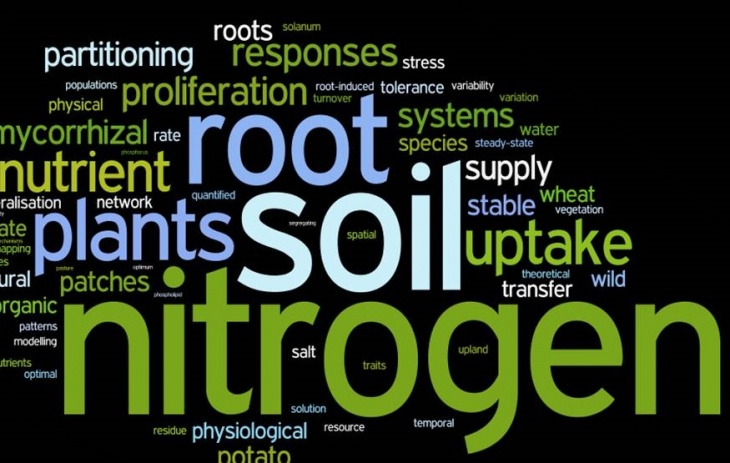
Collaborations
Discussing ecosystem carbon cycling with Guangshui Chen (School of Geographical Science, Fujian Normal University, China):
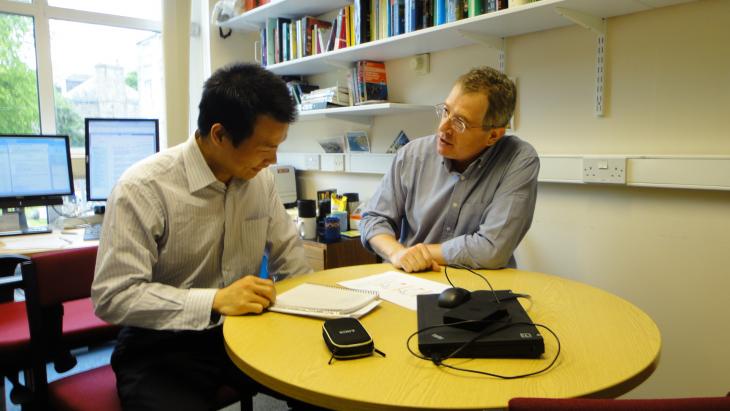
A NERC-funded project: Direct in situ measurement of resource competition by plants along environmental gradients.
Helping Clare Trinder and Rob Brooker to set up one of the largest ever plant competition experiments at Mar Lodge Estate, Aberdeenshire...

...and at the James Hutton Institute, Aberdeen:
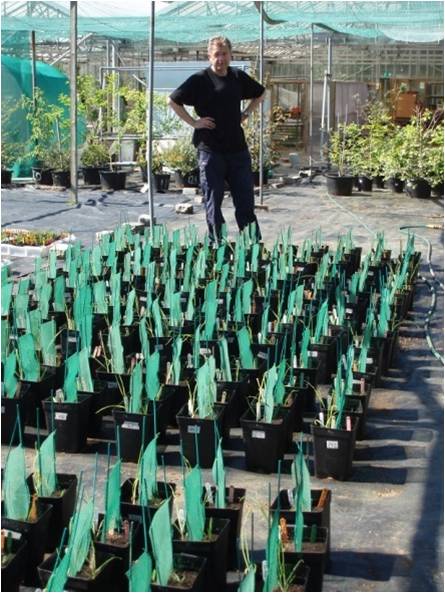
Another NERC-funded project: Environmental drivers of CO2 fluxes from ‘historical’ soil organic matter and the implications for European carbon stocks.
Fabrizio Albanito busy partitioning the soil-surface CO2 flux using 13C/12C natural abundances at San Rossore, Italy:
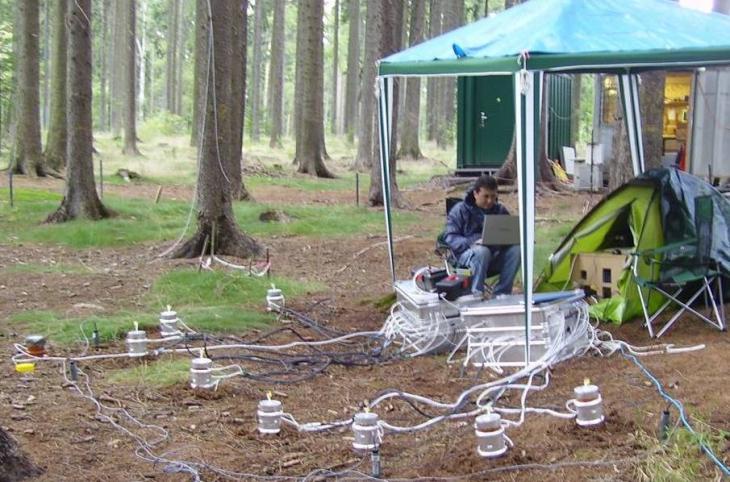
Funding and Grants
Previously a Principal Investigator on various projects funded by the Natural Environment Research Council and the Biological and Biotechnology Research Council.
- Teaching
-
Teaching Responsibilities
Between 2000-2015, coordinator of, or contributor to, various undergraduate and postgraduate courses, including modules on ecosystem ecology, ecophysiology, statistics, field ecology, critical thinking in science, environmental biology, biodiversity, crop domestication, research methodology.
Ecological Methods field course, Bettyhill, 2011:

The enduring influence of George Stewart and John Lee - nitrate reductase lab class:
- Publications
-
Page 1 of 1 Results 1 to 6 of 6
OPT-ing out: Root−shoot dynamics are caused by local resource capture and biomass allocation, not optimal partitioning
Plant, Cell Environment, vol. 46, no. 10, pp. 3023-3039Contributions to Journals: ArticlesDirectly quantifying multiple interacting influences on plant competition
Plant, Cell & Environment, vol. 44, no. 4, pp. 1268-1277Contributions to Journals: Articles- [ONLINE] DOI: https://doi.org/10.1111/pce.13944
- [ONLINE] View publication in Scopus
Clothing the Emperor: Dynamic Root–Shoot Allocation Trajectories in Relation to Whole-Plant Growth Rate and in Response to Temperature
Plants, vol. 8, no. 7, 212Contributions to Journals: ArticlesDemographic quantification of carbon and nitrogen dynamics associated with root turnover in white clover
Plant, Cell & Environment, vol. 41, no. 9, pp. 2045-2056Contributions to Journals: ArticlesPriming of soil organic matter mineralisation is intrinsically insensitive to temperature
Soil Biology and Biochemistry, vol. 66, pp. 20-28Contributions to Journals: Articles- [ONLINE] DOI: https://doi.org/10.1016/j.soilbio.2013.06.020
- [ONLINE] View publication in Scopus
Vegetation and soil 15N natural abundance in alpine grasslands on the Tibetan Plateau: Patterns and Implications
Ecosystems, vol. 16, no. 6, pp. 1013-1024Contributions to Journals: Articles- [ONLINE] DOI: https://doi.org/10.1007/s10021-013-9664-1


